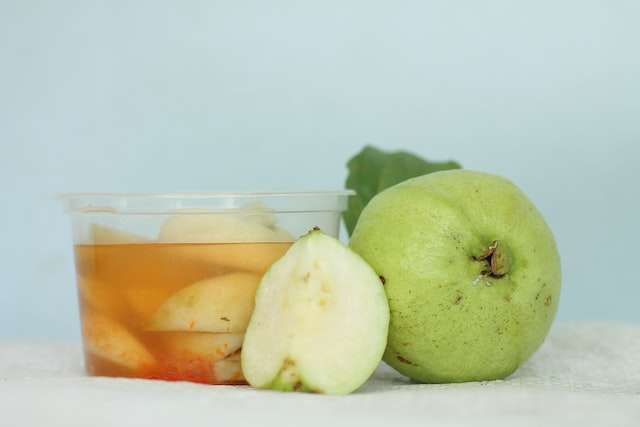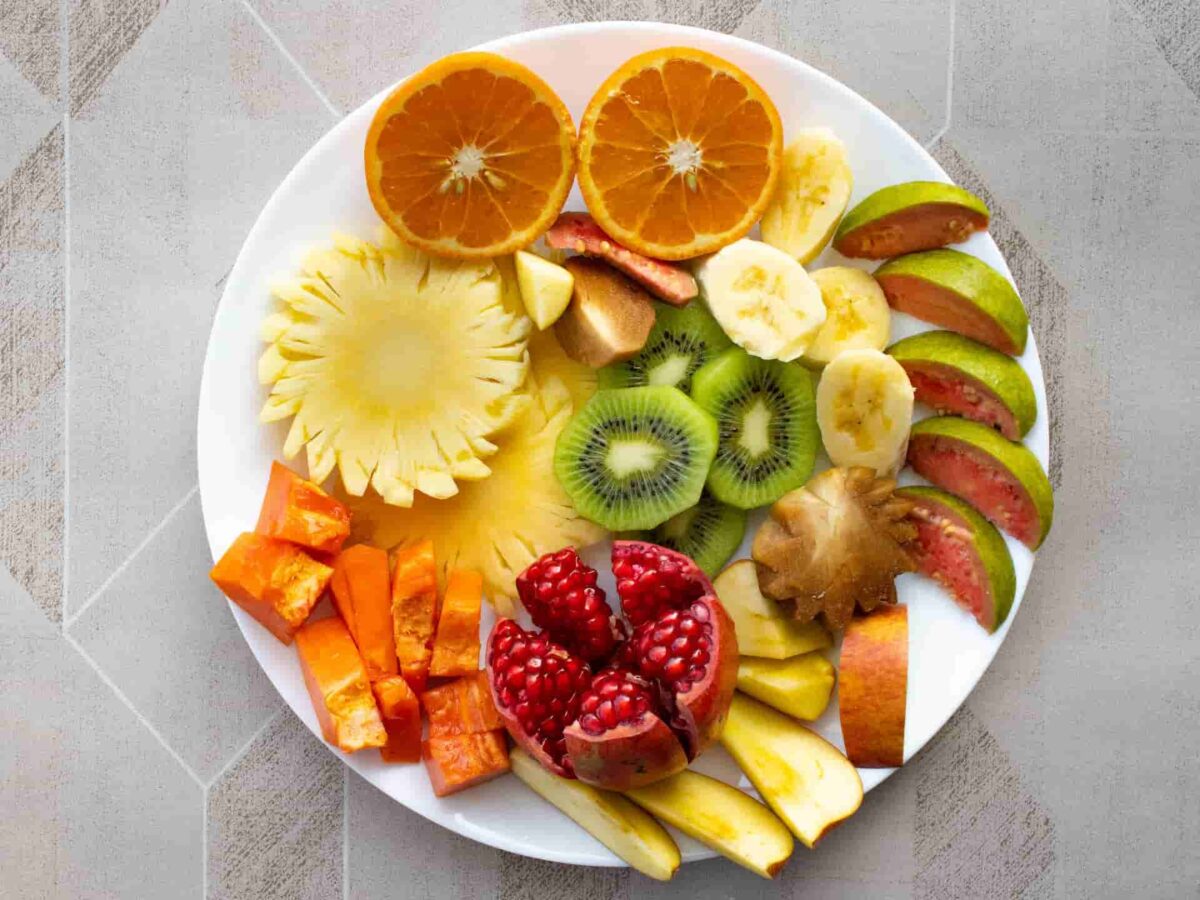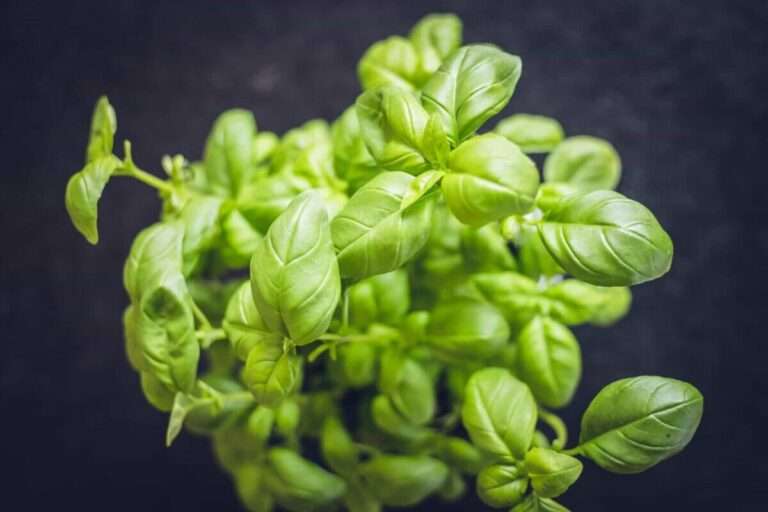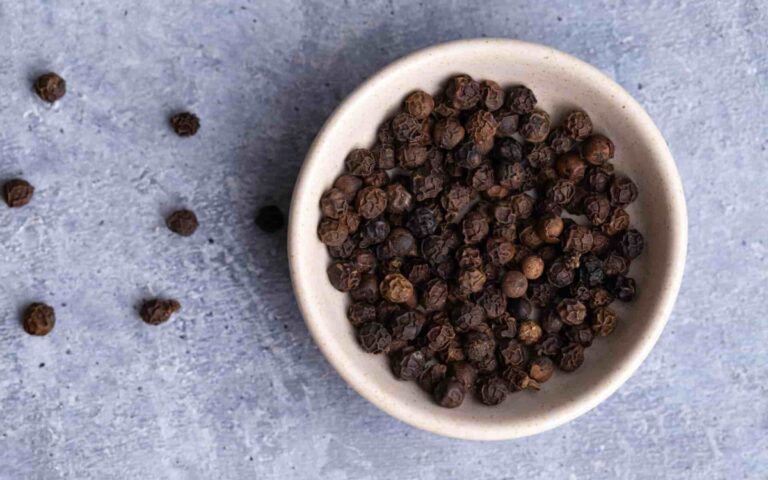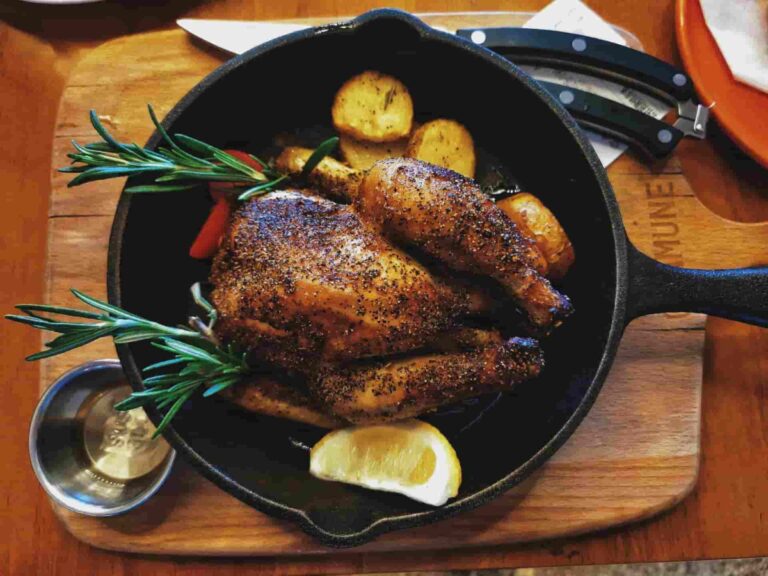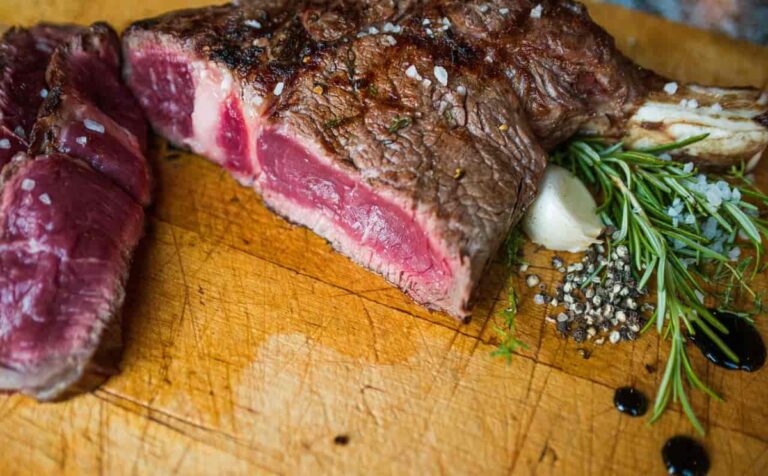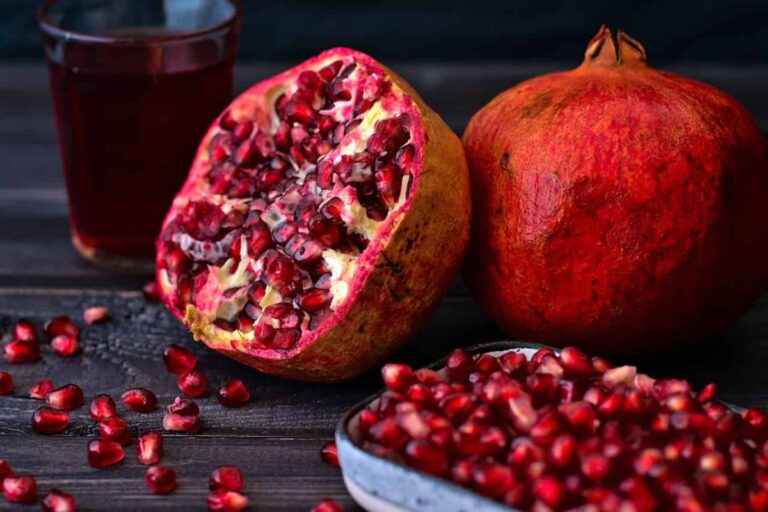Guava 101- kitchen insights just for you
Did you know that the guava fruit is so rich in nutritional content that it is frequently referred to as a “super fruit”?
- This is due to the fact that guava fruits contain four times the amount of vitamin C that is found in an orange, three times the amount of protein that is found in a pineapple, four times the amount of fibre that is found in a tomato, two times the amount of lycopene that is found in a tomato, and just slightly more potassium than a banana.
- In the mythology of the Philippines, there is a narrative that involves guavas that is rather intriguing. In the folklore of the Philippines, it is stated that the guava was at one time regarded an unlawful fruit. A little youngster wanted to help out a homeless man, but all he had was an inedible fruit called guava. The little lad appealed to the gods of the forest. The gods of the forest were so moved by his generosity that they transformed guava into a fruit that people want.
- Guavas are grown on evergreen bushes that may reach heights of 20 feet and have white blossoms. A source of the black pigment used in textiles, the leaves of the shrub provide this material. Combs for the hair are traditionally crafted from the wood of guava shrubs in El Salvador. When it comes to smoking meat, guava wood is highly regarded and sought after.
- In a given year, India produces more than 27,000 tonnes of pink guavas. Guavas are now suffering as a result of the effects of climate change. They have seen an unusually low decline in their yield as a result of the unpredictability of the weather and the severe rains.
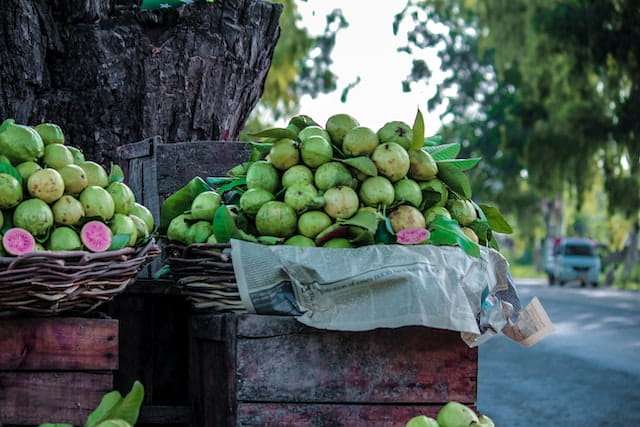
Guava nutrition values and health benefits
- Some research suggests that eating guava might aid with blood sugar control. Guava leaf extract has showed promise in a number of trials for its potential to improve long-term blood sugar control, decrease blood sugar levels, and lessen insulin resistance. Those with diabetes or at high risk for getting the disease might take heart from this. Promising results have also been seen in a limited number of human studies. One study found that those whose blood sugar levels were lower after drinking guava leaf tea after a meal were less likely to develop diabetes. In other instances, the after-effects lasted for up to two hours.
- Research has shown that eating guavas may improve heart health in a number of ways. Several professionals believe that the high levels of antioxidants and vitamins in guava leaves might help shield the heart from free radical damage. Guavas’ higher potassium and soluble fibre content is credited with improving heart health, among other advantages.
- There are a number of health advantages linked with consuming guava leaf extract, including lower blood pressure, lower levels of “bad” LDL cholesterol, and higher levels of “good” HDL cholesterol. Guava leaf extract may provide substantial benefits for patients with high blood pressure and high levels of LDL cholesterol, two risk factors for cardiovascular disease and stroke.
- Guavas are tasty and nutritious because they contain a lot of nutritional fibre. Therefore, eating more guavas can help you prevent constipation and keep your bowels moving smoothly. Just one guava might provide you with 12 percent of your daily recommended intake of fibre. Furthermore, research has revealed that guava leaf extract is good for your digestive system. Some studies have shown that it may reduce the intensity and duration of diarrhoea.
- Fruits like guavas may help you shed pounds since they are low in calories. Having only 37 calories and 12 percent of the daily recommended fibre intake, a single fruit makes for a satisfying and low-calorie snack. Unlike some other low-calorie snacks, they aren’t bereft of essential components like vitamins and minerals.
- There is evidence that guava leaf extract may inhibit tumour growth. The growth of cancer cells has been slowed or stopped in test tubes using guava extract. This is likely due to the fruit’s high quantities of powerful antioxidants, which stop cell damage caused by free radicals (a major cause of cancer). While promising, these in vitro results do not prove that guava leaf extract is an effective cancer therapy in people. It’s important to do further studies before making any final judgments.
- According to studies, having a vitamin C deficit makes you more susceptible to becoming ill. Guavas are an excellent way to get vitamin C since they are one of the best dietary sources of the vitamin. To be more precise, the vitamin C content of a single guava is around twice that of an orange’s RDI. Supplementing your diet with vitamin C is crucial if you want to keep your immune system functioning optimally. Although vitamin C has not been shown to prevent the common cold, it has been shown to lessen the duration of an existing cold.
100g of guava has 68 calories(272kj), 2.6g protein, 1g fat, and 14g carbs, including 5g fibre.
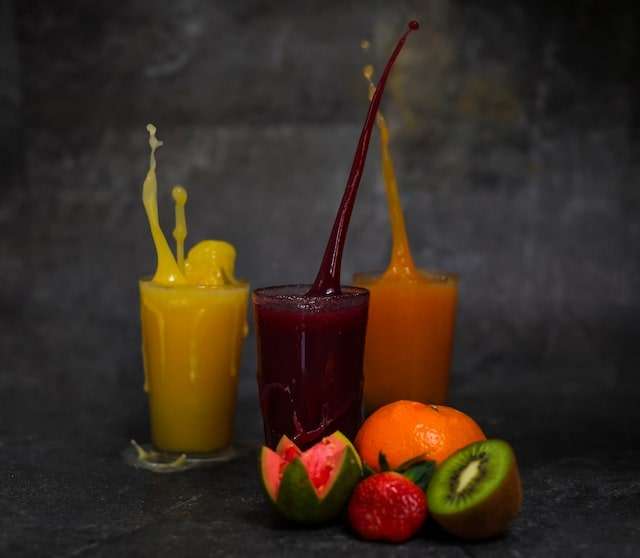
How to store guava and how to buy them
- Check that your guavas are soft to the touch and have a scent that is deep and heady before you put them in the fridge. If you have guavas that aren’t quite ripe yet, you may ripen them by leaving them out on the counter for about two to three days, or until the skin of the fruit gives in when you press on it with your finger. It is best to avoid placing guava near a window since the heat and light from the window might hasten the ripening process and lead it to become overripe. Consider placing the guava in a paper bag and leaving the top of the bag slightly open so as to hasten the process of ripening. This will help the guava mature more quickly.
- Before you put the guava in the refrigerator, be sure to place the whole fruit in a bag to ensure that it stays safe while it’s inside the cold storage unit. The fact that certain fruits give out gases that speed up the ripening process means that the guava will be more secure in its environment if it is contained in a bag. Check that the guava is dry and clean before you place it in the bag. This will ensure that it doesn’t go mouldy. If the guava comes into touch with dirt and water while it is stored in the refrigerator, the fruit may ripen at an even faster rate than normal.
- Even while the guava’s shelf life may be extended to some degree by storing it in the refrigerator, it should still be consumed as soon as feasible. If the guava has been stored in the refrigerator for more than four days, it is recommended that you throw it out. If you are unable to detect whether or not the fruit is ready to be eaten, try pushing on the skin of the fruit to see whether or not it is very soft. If you press on an overripe guava, you will see that it has a dent in it.
- If you want to be able to keep the guavas frozen for a long period of time, it is in your best interest not to put them in the door of the freezer. The temperature fluctuations that occur in the freezer door are larger than those that occur in the rest of the freezer, which may cause the food to become less frozen.
- If the guava has been frozen, it should be used within a year after being frozen. However, despite the fact that guava may be kept in the freezer for a significant amount of time, the flavour of the fruit will start to deteriorate after a year has passed. When you are ready to use the guava, first let it thaw in the refrigerator for about two to three hours before taking it out of the container. Then, proceed to prepare it according to the instructions on the packaging. Even if you aren’t sure what to do with your frozen guava, you can always experiment by making juice out of it, baking with it, or even producing guava barbecue sauce!
- If your guava has any of these characteristics, it’s probably bad:
- Damage to the guava fruit may be seen when you gently press and squeeze it with your fingers. The condition of your guava may be judged by whether or not its skin readily peels away or collapses.
- The scent of rotting or decay might sometimes be a clear sign that your guava fruit has gone bad. The best guavas have a fruity scent that’s between between pears and strawberries.
- If your guava is bad, you can tell because a thorough inspection will reveal mouldy or rotting spots. Fungi growth is an indication that the guava fruit has spoiled.
- Worms in guava fruit are a sure symptom of an insect infestation and a bad omen overall. Some people advocate for eating this kind of fruit, but you discourage it. Consumption of such guava fruit has been linked to a variety of health issues, including allergy development.
- Another sign that your guava fruit has gone bad is if you slice it open and the pulp is a dark colour, such as brown or black.
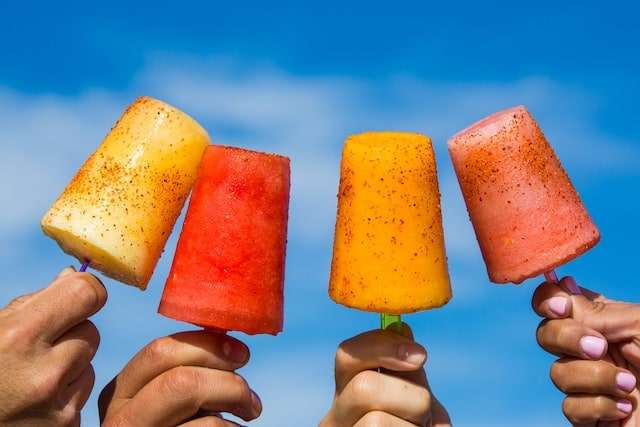
Cooking techniques, secrets, and tips from the kitchen
- There is no better way to get your day started than with this delectable smoothie that is loaded with nutritious ingredients. This luscious smoothie, which includes the nutrients that can be found in guavas, strawberries, milk, and honey, will provide you with the surge of energy that you need so that you can go on with the remainder of your day. In addition, not only is this smoothie an excellent choice for a nutritious beverage to start the day, but it also has a scrumptious taste that the entire family will love.
- Who doesn’t like a spoonful of their favourite chutney on top of their go-to snack food? A spoonful of chutney can improve the flavour of everything you’re eating, whether it’s samosas, tikka, kebabs, or even chips on their own. In addition to the more common chutneys made with mint or coriander, there is a recipe for a chutney made with guava that is both healthful and delicious, and it only requires a few simple ingredients that can be made at home and enjoyed right away. Rich chutney may be made by combining many ingredients, including guavas, green chilies, chilli powder, coriander, and the zest of lime. This chutney can be served with almost any dish.
- It’s almost always a good idea to have a salad for either a light lunch or a light dinner. I like how easy it is to put together, as well as how nutritious and delectably wonderful it is. You only need to prepare it with the veggies and dressing of your choice, and then you’ll be good to go. This salad dish is loaded with the health benefits of guava, apple, cucumber, sprouts, rocket leaves, and cottage cheese. These ingredients are combined in a bowl and topped with a tantalising dressing made from dates, tamarind, jaggery, and black salt, which brings out the best in each individual ingredient.
- To spice up the monotony of the same old dinner routine, try making a delicious guava sauce to serve as a marinade and dipping sauce for roasted chicken or a ham joint. Cook the guava jam, lemon juice, soy sauce, allspice, and a pinch each of salt and pepper in a pot of medium size until it is completely cooked through. Continue cooking until the jam has completely melted and all of the ingredients have been well combined. Put corn starch and water in a separate bowl, and combine it together before adding it to the guava mixture. Bring to a boil and continue cooking for one minute, or until the sauce has reached the desired thickness. Take the pan off the heat and place it somewhere else to cool down.
- Guava water, or agua de guayaba, refers to the beverage in its most literal form. Simply place all of the ingredients into a blender and process until the mixture is silky smooth and delectable. Because of its exceedingly watery consistency, one must not confuse this beverage with a smoothie. Lime juice is a good choice to use if you want to give the dish a citrusy flavour, and you can even prepare it with coconut milk for a creamier consistency if you want to.
- Little hand pies known as empanadas are made with a flaky pastry shell and a filling that may be either savoury or sweet, depending on personal preference. The filling is straightforward to prepare and calls for guava paste and cream cheese as the primary ingredients. Because the paste is already rather sweet, there is no need to add any more sugar to the cream cheese before combining the two ingredients. My go-to method for producing a filling that is more reminiscent of cheesecake is to mix the two components together in greater quantity. On the other hand, this is not obligatory.
- When you take a look at all of the components, it’s natural to have doubts about how well this dip will turn out. Because it is not very sweet, the guava goes quite well with the savoury components that are included in recipes. The standard barbecue sauce may be elevated to a whole new level of deliciousness with only a few simple tweaks, such as the use of mango or applesauce. The same is true for this dip with a velvety texture. You may use it as a dip to go along with breadsticks or chips, or you can try something different and spread it over a sandwich.
- Apples, bananas, ginger, kiwi, lemon, lime, mango, orange, onion, papaya, pear, pineapple, plum, salad greens, star fruit, and strawberries are some of the fruits and vegetables that may be purchased. Guava is a fruit that pairs well with these and other fruits and vegetables. Guava is delicious when combined with a range of nuts and spices, including cashews, hazelnuts, and macadamias, as well as a number of other herbs and spices.
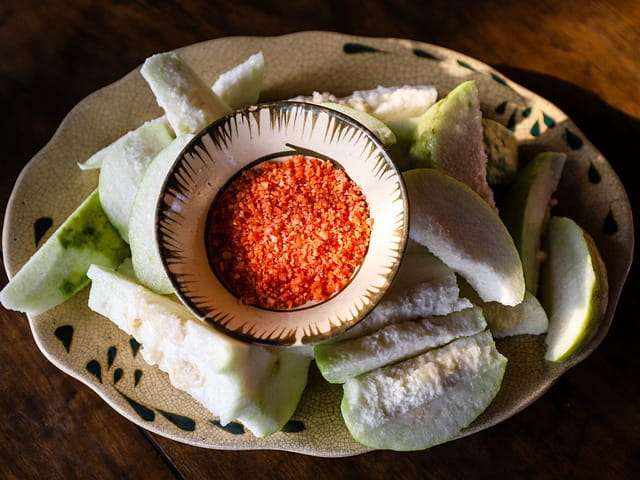
History of guava from the beginning until today
- Guavas came from Mexico, Central America, or northern South America to the Caribbean. Peruvian archaeological sites demonstrate 2500-year-old guava agriculture.
- The Portuguese carried guava to the Philippines in the early 16th century, and it eventually reached India.
- Subtropical and tropical areas of the US, tropical Africa, South Asia, Southeast Asia, and Oceania grew guava. Sarasota, Chipley, Waldo, and Fort Pierce in Florida grow guavas, which were initially imported to the US in the 19th century. In sections of Florida where the Caribbean fruit fly is present, they must be safeguarded against infestation since they are a key host.
- Tropical and subtropical areas grow guavas worldwide. The apple guava and its variants are the most popular in foreign markets.
- In southern Europe, such as the Costa del Sol in Málaga (Spain) and Greece, guavas have been commercially grown since the early 20th century and have flourished as cultivars.
- Mexican and Latin American agua fresca is made using guava. The juice is used in hot or cold sauces, ales, sweets, dry snacks, fruit bars, desserts, and chamoy (a kind of chocolate). Pulque de guava is a local alcoholic drink.
- In many cultures, guava is eaten raw, split into quarters or eaten like an apple, and sprinkled with salt, pepper, cayenne pepper, or spices. American guava is eaten raw, sliced into quarters or eaten like an apple (masala). Filipino Sinigang uses ripe guava. Taiwanese summer street corners and night markets sell guava and dried plum powder with sugar and salt for dipping. East Asians consume guava with sweet-and-sour dried plum powder blends. America loves guava juice. Fruit salads also include it.
- Guavas are used to make candies, jams, jellies, marmalades, and toast marmalade. Guavas have plenty of pectin.
- Red guavas may replace tomatoes in salty dishes to lessen acidity. An infusion of guava fruits and leaves, called chá-de-goiabeira in Brazil, may be made into a therapeutic drink.
